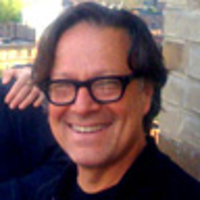Fashion as a curatorial muse is still a relatively new concept. But for the past year, the International Center of Photography’s concentration on fashion photography has put it in the context of that industry’s profound, if usually unacknowledged, influence on modern culture—from Edward Steichen’s work for Condé Nast in the ‘20s and ‘30s to Richard Avedon’s sixty-year career. Previously, the museum explored the social implications of fashion imagery, as in “Weird Beauty” and “ This Is Not a Fashion Photograph,” and now the ICP is completing its series with “ Dress Codes,” the museum’s third “Triennial of Photography and Video.” (October 2-January 17) No museum in the United States has given such detailed focus to photographic imagery made ostensibly for, or in relation to, the fashion industry—a rumination long overdue in the stratosphere of art historical discourse.
Click Image To View Our Gallery

In 1982, Artforum shocked the art world when it featured the avant-garde Japanese designer Issey Miyake on its cover. That was the first time fashion had so unabashedly entered the precincts of art. Quaint as it might seem today, the overt marriage of art and commerce was still something of a taboo a quarter century ago. And fashion, in particular, was a pop-cultural trinket unworthy of any serious artist’s attention. While Richard Avedon and Irving Penn may have already been shown in galleries, the hairs of the “commerce as art” taboo were split in such a way then that Avedon was known in the art world for his portraits and Penn, his larger than life cigarette butts--as opposed to their commercial “day job” fashion photographs.
ADVERTISEMENT
In 2004, the Museum of Modern Art mounted a show entitled “Fashioning Fiction in Photography,” which examined the narrative strategies incorporated by artists in fulfilling commercial assignments in the fashion industry. It was the first museum show that addressed fashion as the subject of artistic inquiry.
Today, the interplay of art and fashion is in evidence everywhere. In W magazine alone fashion portfolios by art world photographers such as Philip-Lorca di Corcia, Larry Sultan, and Stephen Shore are standard fare. Advertising campaigns for Prada, Kate Spade, and Bottega Veneta are often shot by photographers whose reputations have long been secured by gallery representation and museum exhibitions. There was a time when artists who accepted commercial commissions would have been called sell-outs, but that’s so yesterday, even in critical terms.
Clothing, of course, has always been the essential ingredient in fashion photography, but one result of this cross-pollination between art and fashion is that clothes are no longer the identifiable focus of fashion imagery. Lifestyle, or sensibility, is the dominant commodity, clothing the subliminal message. Not that this is exactly new, either: In 1962, Avedon shot a ten-page fashion spread in Harper’s Bazaar in which he staged Mike Nichols and Suzy Parker as a La Dolce Vita-like couple in a series of paparazzi-esque images as they traveled through Europe, emulating a glamorous movie star life. In doing so, Avedon foreshadowed the conceptual narrative image so pervasive in today’s photographic art making. In the early 1980s, Ralph Lauren introduced an advertising campaign simulating an epic lifestyle that transpired in great manor houses and signified the inner sanctum world of East Coast aristocracy. (Drooling over such luxury was supposed to result in a cathexis of the Ralph Lauren label.) And by the late ‘80s the look of advertising imagery became a visual emblem of art world photography.
ICP’s “Dress Codes” is a survey not of fashion photographs but, rather, visual imagery that explores fashion as a subject of artistic inquiry: How does the individual construct a public persona? The artist Alice O’Malley takes the question one step further in her portraits of individuals, such as Antony of Antony and the Johnsons, who transcend conformist notions of gender identity. What constitutes fashion in an increasingly homogenized global culture? Cao Fei’s video introduces a fashion shoot in her Second Life reality utilizing her avatar, known as China Tracy. How do clothes, hairstyles, jewelry, and make-up add up to our preconceptions of beauty? The concept of adornment is explored in Pinar Yolacan’s photographs of Brazilian women in garments fashioned from animal entrails and organ meats; they certainly offer new possibilities.
Some artists in this show adhere to photographic conventions while others subvert and extend the form, teasing out a variety of transgressive positions about the nature of fashion. While the visual tenor of this exhibition might be challenging for those with expectations that revolve around aesthetic enjoyment, the host of ideas addressed in this show should start a few conversations about what it means to get dressed in the morning.
Plus: Check out Art Beast, for galleries, interviews with artists, and photos from the hottest parties.
Philip Gefter was a picture editor at The New York Times and wrote regularly about photography for the paper. His book of essays, Photography After Frank, was recently published by Aperture. He is currently producing a feature-length documentary on Bill Cunningham of the Times, and working on a biography of Sam Wagstaff.





